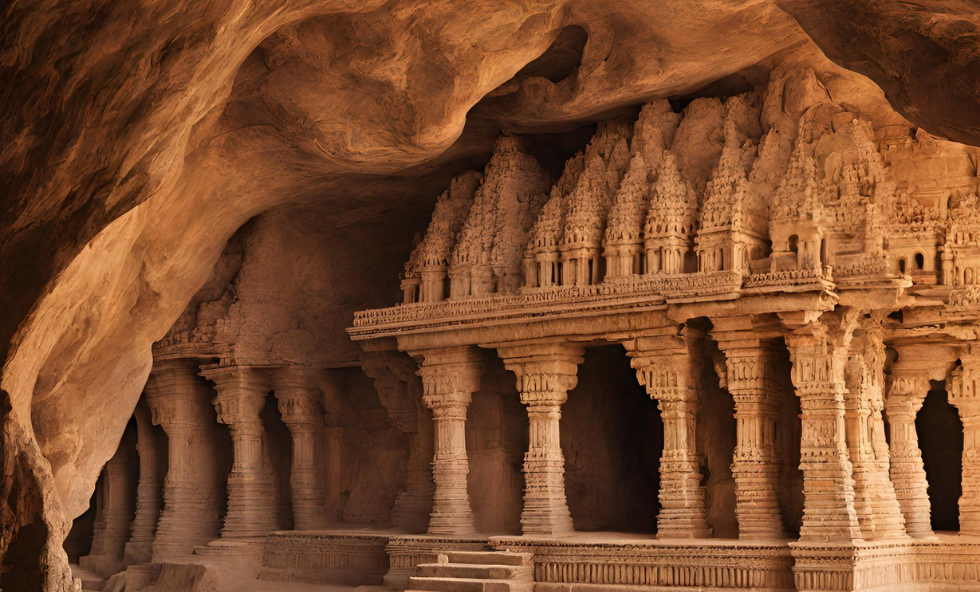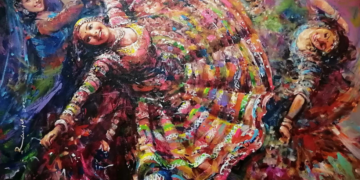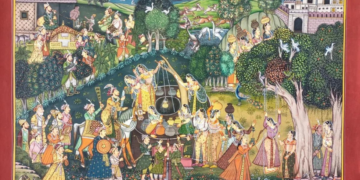Imagine a world where ancient temples and detailed sculptures are carved into the living rock. This is the world of cave architecture, an ancient Indian art form that has left behind a legacy of stunning beauty and spiritual significance.
Cave architecture flourished in ancient India from the 3rd century BCE to the 7th century CE, and its influence can still be seen today in the many cave temples and monasteries that dot the Indian landscape. But what makes cave architecture so significant?
For one, it represents a remarkable feat of engineering and artistry. To carve a complex structure out of solid rock requires immense skill and precision. But cave architecture is more than just a technical achievement. It is also a profound expression of Indian culture and spirituality.
Many cave temples were built by Buddhist, Jain, and Hindu monks, who used them as places of worship and meditation. The caves are often decorated with intricate sculptures and murals that depict religious stories and symbols. These works of art provide a unique glimpse into the beliefs and practices of ancient Indians.
Cave architecture is also significant because it offers a valuable source of historical information. The caves often contain inscriptions and other artifacts that shed light on the political, economic, and social life of ancient India.
In short, cave architecture is a fascinating and important part of Indian culture and heritage. It is a testament to the ingenuity and creativity of ancient Indian artists and craftspeople, and it provides us with a glimpse into the rich spiritual and intellectual traditions of the time.
What is The History of Cave Architecture in India?
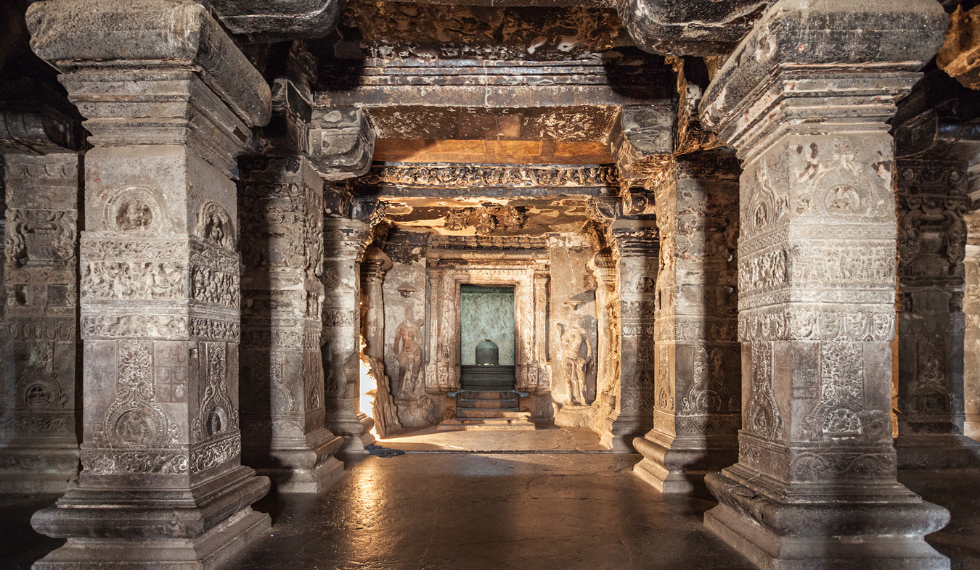
The origins of cave architecture in India can be traced back to the 3rd century BCE, when the Mauryan emperor Ashoka commissioned the construction of a series of caves for the Ajivikas, a sect of ascetic philosophers. These early caves were simple and austere, but they laid the foundation for the more elaborate cave temples and monasteries that would be built in the centuries to come.
The development of cave architecture in India was driven by the patronage of wealthy individuals and dynasties. Buddhist, Jain, and Hindu rulers all commissioned the construction of cave temples and monasteries to promote their respective religions. Cave temples were also seen as a way to gain merit and prestige.
One of the most significant periods in the history of cave architecture in India was the Gupta era (4th-6th centuries CE). During this time, cave temples were built all over India, from the Ajanta Caves in Maharashtra to the Elephanta Caves in Mumbai. These caves are known for their exquisite sculptures and murals, which depict religious stories and symbols.
Cave architecture continued to flourish in India until the 7th century CE, when it began to decline due to a number of factors, including the rise of Islam and the shift of patronage to other forms of architecture.
Today, the cave temples and monasteries of India stand as a testament to the rich cultural and spiritual heritage of the country. They are also a reminder of the skill and artistry of the ancient Indian people.
Major Forms of Cave Architecture in Ancient India
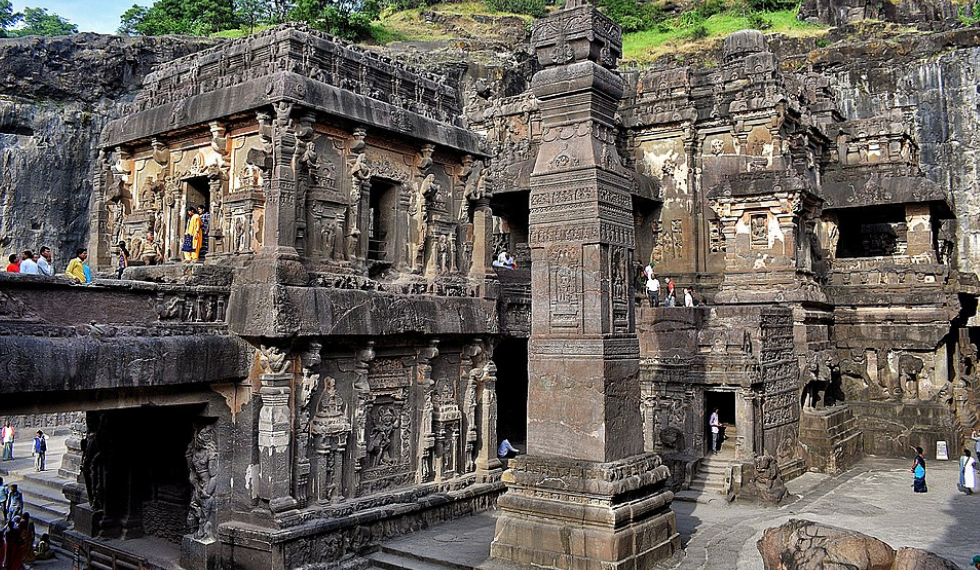
In the elaborate structure of Ancient India’s architectural heritage, cave architecture stands as a shining gem, each rock-hewn masterpiece echoing with history. These cavernous wonders take on various forms, each uniquely telling a story of spirituality, artistry, and innovation.
1. Chaitya Halls (Prayer Halls): Imagine standing in a grand, cathedral-like space, carved out of the living rock. These awe-inspiring Chaitya halls were prayer sanctuaries, adorned with exquisite facades and elaborate stone columns. As you explore the Ajanta and Karla Caves, you’ll witness the remarkable interplay of light and shadow, creating a mystical atmosphere for devotees.
2. Viharas (Monasteries): Viharas were the tranquil abodes for monks, offering solitude and reflection. Often comprised of numerous cells for individual meditation, with beautiful courtyards and exquisitely carved pillars, these monasteries are exemplified by sites like the Ellora Caves. They served not only as spiritual retreats but also as centers of learning and communal living.
3. Stupa Caves: Stepping into a stupa cave is like entering a spiritual realm. These caves house stupas, which are sacred mounds or domes symbolizing the Buddha. The Great Chaitya at Karla, an early example, features a colossal stupa and intricate carvings, while the Kanheri Caves near Mumbai offer a glimpse into the rich history of Buddhist worship.
4. Rock-Cut Temples: The rock-cut temples represent a fusion of architecture and devotion. Intricately carved with elaborate sculptures and detailed reliefs, they house deities and serve as places of worship. The Kailasa Temple at Ellora, a colossal monolith carved from a single rock, is an astounding testament to the skill and dedication of ancient craftsmen.
Cave architecture in ancient India played an important role in the spread of religion and culture. The caves were used as places of worship, meditation, and learning. They also provided a safe haven for monks and nuns during times of political turmoil.
Cave architecture also had a significant impact on Indian art and architecture. The intricate carvings and sculptures found in the caves inspired artists and architects for centuries to come.
What is The Major Cave Architecture in Ancient India?
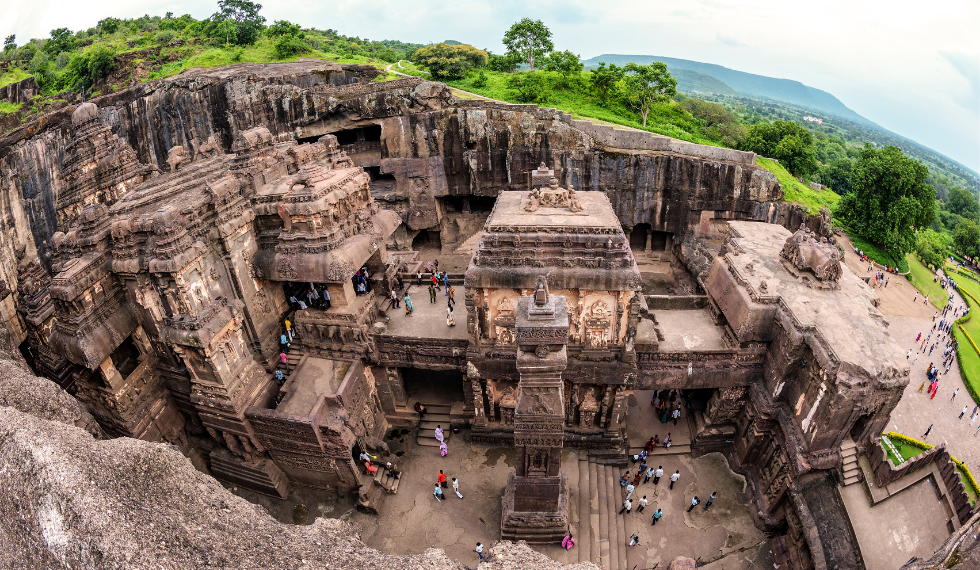
Ajanta Caves: The Masterpieces of Buddhist Art
The Ajanta Caves, situated in Maharashtra, stand as exquisite exemplars of Buddhist cave architecture. Carved into a horseshoe-shaped rock escarpment, they house some of the finest mural paintings and sculptures of the Buddhist tradition. These extraordinary works of art date back to the 2nd century BCE, offering an unparalleled glimpse into the life and teachings of Buddha, with a total of 29 rock-cut caves. These caves are renowned for their exquisite murals that depict Buddhist stories and symbols in vibrant colors. As you wander through the caves, marvel at the stunning depictions of the Buddha, his life, and his teachings.
Ellora Caves: A Marvelous Fusion of Faiths
The Ellora Caves, also in Maharashtra, showcase a remarkable blend of Hindu, Buddhist, and Jain cave architecture. This UNESCO World Heritage Site consists of 34 caves, representing various faiths and styles. The Kailash Temple, in particular, is an engineering marvel, carved from a single rock and dedicated to Lord Shiva. It serves as an awe-inspiring testament to the architectural brilliance of ancient India. These towering temples are carved into the hillside, creating a breathtaking sight. As you explore the caves, admire the intricate carvings and sculptures that depict Hindu deities, Jain Tirthankaras, and Buddhist monks.
Elephanta Caves: The Mystique of Lord Shiva
Off the coast of Mumbai, the Elephanta Caves beckon with their resplendent sculptures dedicated to Lord Shiva. These rock-cut caves feature grandiose carvings and intricately designed panels that narrate stories from Hindu mythology. The primary cave, known as the Shiva Cave, is adorned with a colossal three-headed statue of Lord Shiva, depicting his various divine aspects.
Udayagiri Caves: Jainism in Stone
Moving to Udayagiri and Khandagiri in Odisha, we encounter the Udayagiri Caves, renowned for their Jain cave architecture. These caves, chiseled into the hills, house inscriptions, ornate carvings, and ancient sculptures that provide insights into Jain traditions and monastic life. These caves have served as both religious sanctuaries and historical documents.
Barabar Caves: The Oldest Known Rock-Cut Structures
A group of rock-cut caves in Bihar, the Barabar Caves are among the oldest cave architecture in India, dating back to the Mauryan period in the 3rd century BCE. These caves were created for the ascetic followers of the Ajivika sect and are characterized by their polished, smooth surfaces and simple, austere design. These caves are in stark contrast to the more elaborate cave temples of Ajanta and Ellora. As you step into the caves, feel the sense of peace and tranquility that emanates from their minimalist design.
Bagh Caves: A Hidden Gem
The Bagh Caves, tucked away in the heart of Madhya Pradesh, are lesser-known but equally enchanting. These nine rock-cut caves are adorned with exquisite murals that vividly depict scenes from Buddhist Jataka tales. They offer a fascinating glimpse into the art and culture of ancient India. These caves are lesser-known than the Ajanta and Ellora Caves, but they offer a no less enchanting experience. As you wander through the caves, admire the beautiful murals that come alive in the soft light of the candles.
Karla Caves
The Karla Caves, nestled in Karli, Maharashtra, India, are ancient Buddhist cave shrines chiseled into solid rock. These architectural wonders date from the 2nd century BC to the 5th century AD, with the earliest cave believed to have been hewn around 160 BC. The site’s centerpiece is a colossal rock-cut chaitya, one of India’s largest, measuring 45 meters in length and standing 14 meters tall. The chaitya, or prayer hall, is adorned with a multitude of vibrant sculptures, featuring depictions of males, females, as well as symbolic figures like lions and elephants. The caves’ distinctive arched entrances and vaulted interiors are hallmarks of their design. Today, they are safeguarded as protected monuments under the ‘Archaeological Survey of India.’
Badami Caves
The Badami Caves, located in the town of Badami, Karnataka, India, are home to a trio of cave temples representing Hindu, Jain, and possibly Buddhist traditions. These caves are exemplary specimens of Indian rock-cut architecture and showcase the Badami-Chalukya architectural style, prevalent during the 5th to 8th centuries. They stand as early instances of Hindu temple construction, boasting intricate sculptures, ornate pillars, finely carved ceiling panels, and decorative brackets. Within the Hindu cave temples, vivid sculptures portraying Hindu deities can be found, including the iconic Nataraja dancing Tandava in Cave 1 and the depiction of Trivikrama in Cave 2. The most striking of the caves is Cave 3, the largest in the complex, which features mythological representations associated with Lord Vishnu.
Cave Architecture Across Ancient India: Art, Sculptures, and Conservation
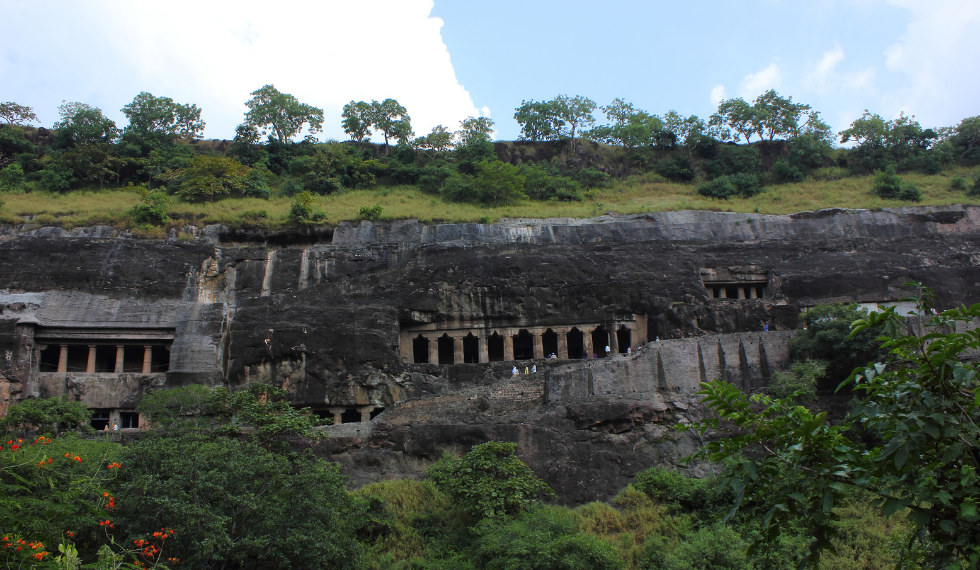
Cave architecture in different regions of ancient India
Cave architecture flourished in different regions of ancient India, including:
- Western India: The western Deccan region was one of the earliest centers of cave architecture in India. Some of the most famous cave architecture sites in western India include the Ajanta Caves, Ellora Caves, Elephanta Caves, and Udayagiri Caves.
- Central India: Central India is home to a number of important cave architecture sites, including the Bagh Caves, Barabar Caves, and Lomas Rishi Cave.
- Eastern India: Eastern India is home to a number of Buddhist cave temples, including the Udayagiri and Khandagiri Caves in Odisha and the Jogeshwari Caves in Jharkhand.
- Southern India: Southern India is home to a number of Hindu cave temples, including the Badami Caves in Karnataka and the Sittanavasal Caves in Tamil Nadu.
Cave art and sculptures
Cave architecture in ancient India was often adorned with exquisite cave art and sculptures. The cave art and sculptures depict a wide range of subjects, including religious stories and symbols, scenes from everyday life, and portraits of rulers and other dignitaries.
Some of the most famous examples of cave art and sculptures in ancient India include:
- The Ajanta Caves are renowned for their exquisite murals, which depict Buddhist stories and symbols in vibrant colors.
- The Ellora Caves are home to a number of monumental sculptures, including the colossal statue of Shiva in the Kailasanathar Temple.
- The Elephanta Caves are home to a number of Hindu sculptures, including the iconic Trimurti sculpture of Shiva, Brahma, and Vishnu.
- The Bagh Caves are known for their beautiful murals, which depict Hindu and Buddhist deities and stories.
- The Badami Caves are home to a number of Hindu sculptures, including the Varaha Narasimha sculpture of Vishnu.
Conservation of cave architecture
Cave architecture in ancient India is a precious cultural heritage. However, these caves are also vulnerable to damage from natural and human causes.
Natural causes of damage to cave architecture include weathering, erosion, and earthquakes. Human causes of damage to cave architecture include vandalism, tourism, and development.
A number of initiatives are underway to conserve cave architecture in ancient India. These initiatives include:
- Restoration and conservation work: The Archaeological Survey of India (ASI) is responsible for the restoration and conservation of cave architecture in India. The ASI carries out a variety of conservation work, including cleaning and repairing cave walls and sculptures.
- Tourism management: The ASI has implemented a number of measures to manage tourism at cave architecture sites. These measures include limiting the number of visitors, restricting access to certain areas, and providing educational programs for visitors.
- Community participation: The ASI is working with local communities to raise awareness about the importance of cave architecture conservation. The ASI is also providing training to local communities in cave architecture conservation skills.
The conservation of cave architecture in ancient India is an important task. These caves are a precious cultural heritage that needs to be preserved for future generations.
Conclusion
Cave architecture in ancient India is a remarkable testament to the skill, artistry, and devotion of the people who created it. These rock-cut temples and monasteries are not only architectural marvels, but they also offer valuable insights into the religious and cultural beliefs of the time.
Cave architecture in ancient India flourished for centuries, and it can be found in different regions of the country. Some of the most famous cave architecture sites in ancient India include the Ajanta Caves, Ellora Caves, Elephanta Caves, Udayagiri Caves, and Barabar Caves.
Cave architecture in ancient India played an important role in the spread of religion and culture. The caves were used as places of worship, meditation, and learning. They also provided a safe haven for monks and nuns during times of political turmoil.
Cave architecture also had a significant impact on Indian art and architecture. The intricate carvings and sculptures found in the caves inspired artists and architects for centuries to come.
Cave architecture in ancient India is a fascinating and important part of Indian culture and heritage. If you are interested in learning more about cave architecture, we encourage you to visit one of the many cave architecture sites in India. You can also learn more about cave architecture by reading articles on the subject.

